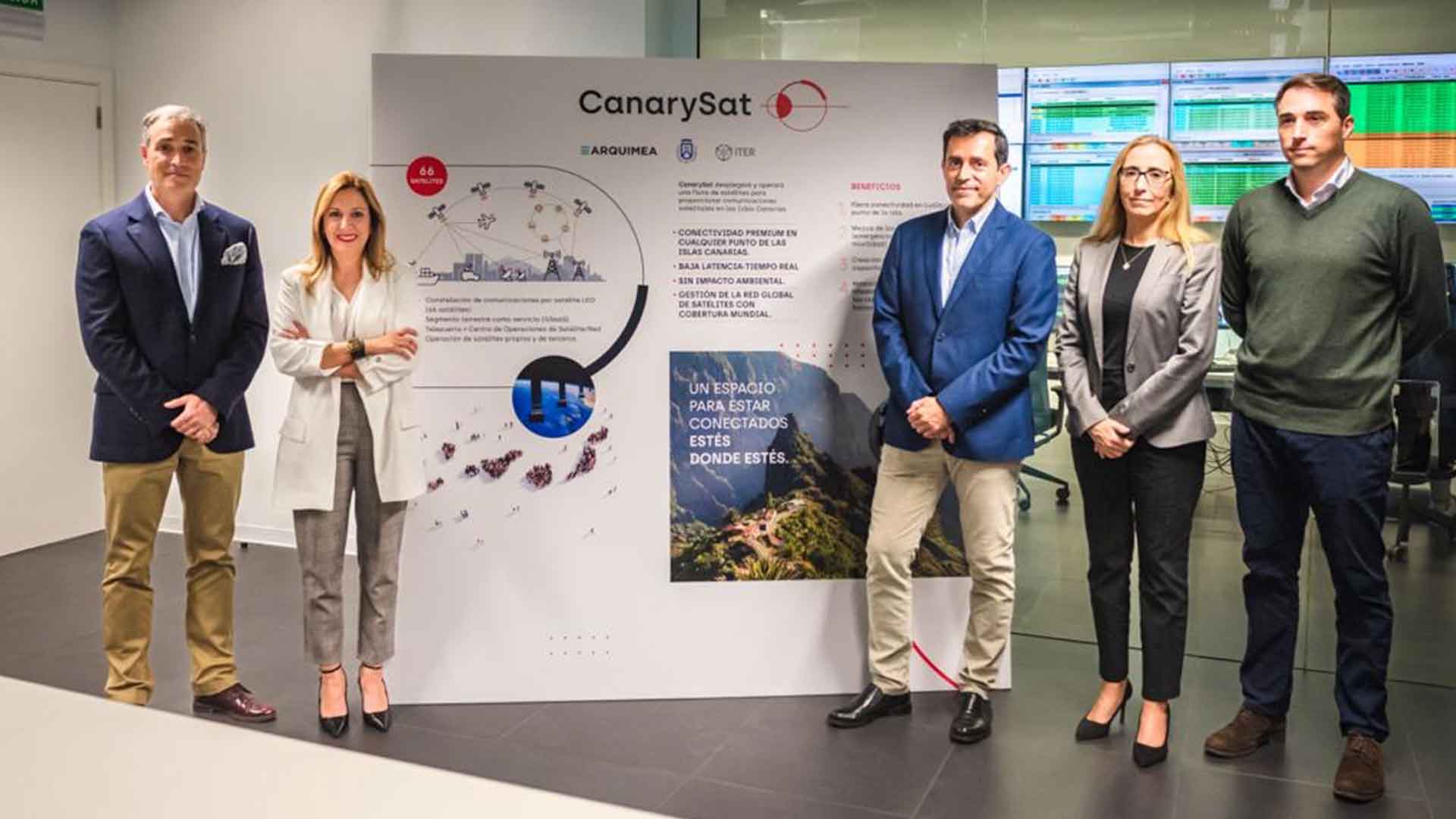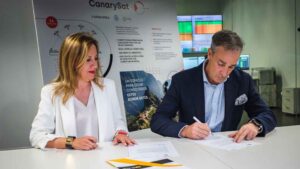- Sectors
- Aerospace & Defense
- Big science
- Biotechnology
- Fintech
- Insights

Tenerife, 19 December 2023
The Island Council of Tenerife and ARQUIMEA have signed a Letter of Intent for the creation in Tenerife of the first satellite control centre at the Institute of Technology and Renewable Energies (ITER, Instituto Tecnológico y de Energías Renovables) and a gateway or teleport, which will connect to Canalink, the neutral communications operator.
This teleport will be part of the CanarySat project that ARQUIMEA, a Spanish technology company with a large presence in the Canary Islands, has launched. CanarySat is a company based in the Canary Islands that will manage and operate its own fleet of 66 telecommunications satellites and provide services to other satellite operators and telecommunications providers globally.
This was explained this morning at ITER by the President of the Island Council, Rosa Dávila Mamely, and the CEO of ARQUIMEA, Manuel García-Sañudo, in the presence of the Regional Minister for Innovation, Research and Development Juan José Martínez.
During her address, Rosa Dávila “highlighted the commitment of the Island Council of Tenerife to make Tenerife the epicentre of technological development in the Canary Islands, bridging the distances in kilometres that once separated us from the most developed centres of the planet, thanks to our tax incentives and the opportunities that our geographical location also provides”.
Manuel García-Sañudo, CEO of ARQUIMEA, “thanked the Island Council of Tenerife for its support, through benchmark technological institutions, such as ITER and Canalink, allowing us to push forward and accelerate the implementation of an exciting project that will offer a premium connection in all the islands and position the Canary Islands as a benchmark enclave in telecommunications”.
In turn, the President stressed that “this project represents a great opportunity for Tenerife and the entire Canary Islands, by converting the islands into a global benchmark hub for telecommunications and satellite operations, thus responding to the growing worldwide demand for satellite telecommunications services”, and she assured that CanarySat will improve connectivity throughout the islands and between the archipelago and the rest of the world.
García-Sañudo explained that the project starts with an initial phase, which “includes the construction of the satellite control centre, as well as a teleport, which will operate third-party satellites and provide satellite data upload/download, antenna hosting, control and secure data storage services”.
During the second phase, a proprietary network of 66 broadband communications satellites will be built, put into orbit and marketed. This will enable CanarySat to offer global, secure and quality services by having the necessary ground segment and space segment infrastructure and capacity on the islands.
The planned investment is €300 million and is expected to attract both national and international investors looking to participate in a technological project with high growth potential. In addition, the project has been certified as suitable for RIC (Reserve for Investment in the Canary Islands) investment, which is an incentive for Canary Islands investors.
In this regard, Juan José Martínez highlighted the strategic importance of the technology companies operating in Tenerife, such as the ITER and Canalink, in the construction of a diversified and technologically advanced ecosystem. “The partnership with ARQUIMEA for the development of CanarySat is an opportunity to boost the island’s economy through job creation and attracting investment in technology”, he concluded.
CanarySat
The CanarySat project is expected to generate around 100 new direct and indirect high-skilled jobs and will attract high value-added companies, such as satellite operators, tele-health, banking and cybersecurity companies, looking for premium real-time and low-latency connectivity.
CanarySat will provide service to satellite operators and be compatible with other constellations, such as BeetleSat or IRIS², the multi-orbital satellite telecommunications constellation that the European Commission plans to deploy in 2027.
